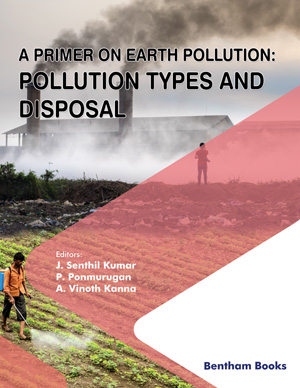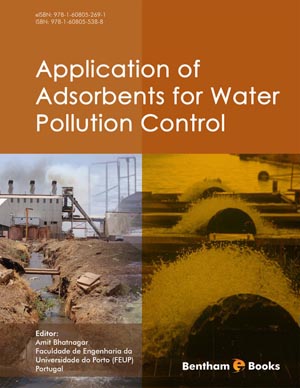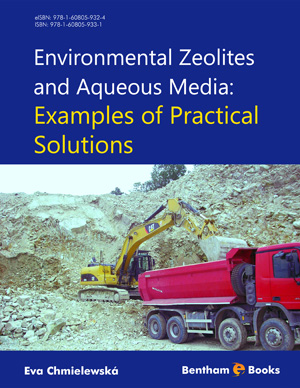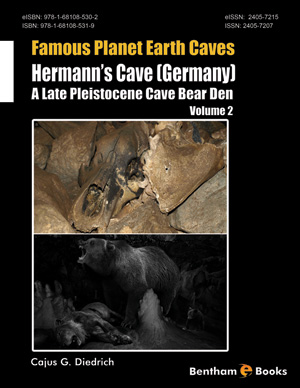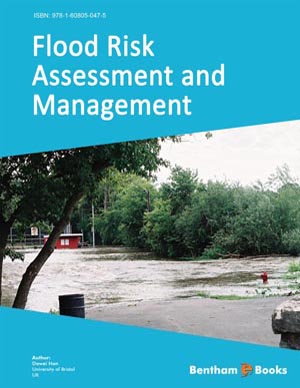Foreword
Page: ii-ii (1)
Author: Serge Leroueil
DOI: 10.2174/9781608057399113010002
List of Abbreviations
Page: vi-vi (1)
Author: Eduardo Rojas
DOI: 10.2174/9781608057399113010004
Introduction
Page: 3-11 (9)
Author: Eduardo Rojas
DOI: 10.2174/9781608057399113010005
Abstract
The use of the effective stress principle led to a general theory for the strength and volumetric behavior of saturated soils. Presently, all constitutive models for saturated soils are based on this principle. In 1959 Bishop proposed an equation for the effective stress of unsaturated soils. However, it was severely criticized because it could not explain by itself the phenomenon of collapse upon wetting. Moreover, an analytical expression for the determination of its main parameter X was not provided and in addition, its value could not be easily determined in the laboratory. Since then several equations to determine the value of parameter X have been proposed and fifty years later it is acknowledge that Bishop’s effective stress equation can be employed to simulate the behavior of unsaturated soils when it is complemented with a proper elastoplastic framework.
The Effective Stress Equation
Page: 12-23 (12)
Author: Eduardo Rojas
DOI: 10.2174/9781608057399113010006
Abstract
Based on the analysis of the equilibrium of solid particles of an unsaturated sample subject to certain suction it is possible to establish an analytical expression for Bishop´s parameter X. The resulting stress can be used to predict the shear strength and volumetric behavior of unsaturated soils. This equation clarifies some features of the strength of unsaturated soils that up to now had no apparent explanation. The effective stress parameter X is written as a function of three quantities: the saturated fraction, the unsaturated fraction and the degree of saturation of the unsaturated fraction of the sample. A drawback to this expression is that the determination of these three parameters cannot be made from current experimental procedures.
The Porous-Solid Model
Page: 24-53 (30)
Author: Eduardo Rojas
DOI: 10.2174/9781608057399113010007
Abstract
In the previous chapter, an analytical expression based on the equilibrium of the solid particles of an unsaturated soil sample subjected to loading was established in order to determine Bishop´s parameter X. This parameter can be written as a function of the saturated fraction, the unsaturated fraction and the degree of saturation of the unsaturated fraction of the sample. However, the determination of these three parameters cannot be made from current experimental procedures. In order to quantify these parameters, a porous-solid model capable of simulating the structure of real soils is proposed herein. The data required to build the porous-solid model are the grain and pore size distributions in addition to the void ratio of the material.
The Probabilistic Porous-Solid Model
Page: 54-81 (28)
Author: Eduardo Rojas
DOI: 10.2174/9781608057399113010008
Abstract
In the previous chapter, a computational network porous model was developed to simulate the hydraulic behavior of unsaturated soils. However, important computational constraints make this model unpractical. In this chapter a probabilistic porous-solid model is developed to overcome these constraints. The probabilistic model is an alternative to the use of computational network models and shows important advantages. This model was built by analyzing the probability of a certain pore to be filled or remain filled with water during a wetting or drying process, respectively. The numerical results of the probabilistic model are compared with those of the computational network model showing only slight differences. Then the model is validated by doing some numerical and experimental comparisons. Finally a parametric analysis is presented.
Applications of the Porous-Solid Model
Page: 82-101 (20)
Author: Eduardo Rojas
DOI: 10.2174/9781608057399113010009
Abstract
In the previous chapter, a probabilistic porous-solid model adequate for the simulation of soil-water retention curves of soils was developed. In this chapter, the model is used to interpret more realistically the results of mercury intrusion porosimetry experiments. Moreover, it is used to obtain the pore size distribution of different soils while using both boundary branches of the retention curve as data. The numerical and experimental comparisons for different soils show that the model approximately reproduces the pore size distribution obtained from mercury intrusion porosimetry tests. Finally, the procedure to adjust the numerical and experimental soil-water retention curves in order to obtain the pore size distribution of soils is presented herein.
Compression Strength of Soils
Page: 102-109 (8)
Author: Eduardo Rojas
DOI: 10.2174/9781608057399113010010
Abstract
In this chapter, the probabilistic porous-solid model is used to determine the mean effective stress of soils at failure. The plot of the deviator stress against the mean effective stress shows a unique failure line for a series of triaxial tests performed at different combinations of the confining net stress and suction for both wetting and drying paths. This result confirms that the proposed effective stress equation is adequate to predict the shear strength of unsaturated soils. It also results in different strengths for wetting and drying paths as the experimental evidence indicates.
Tensional Strength
Page: 110-114 (5)
Author: Eduardo Rojas
DOI: 10.2174/9781608057399113010011
Abstract
In this chapter, the probabilistic porous-solid model is used to simulate the tensional strength of unsaturated soils tested at different water contents. The strength of unsaturated soils can be split in two parts: one related to the net stress and the other to suction. The strength generated by suction has its origin on the additional contact stresses induced to solid particles by water meniscus. This additional contact stress is called matric suction stress. In that sense, the tensional strength of soils represents the matric suction stress of the material at that particular water content. The numerical and experimental comparisons of the tensional strength of unsaturated soils tested at different water contents show that the probabilistic porous-solid model can simulate this phenomenon with sufficient accuracy.
Volumetric Behavior
Page: 115-139 (25)
Author: Eduardo Rojas
DOI: 10.2174/9781608057399113010012
Abstract
An equation to account for the volumetric behavior of unsaturated soils is proposed in this chapter. This equation is based on the effective stress principle and results in a unifying framework for the volumetric behavior for both saturated and unsaturated soils. The results of the proposed equation are compared with experimental results published by different researchers. These comparisons show that the equation is adequate to account for wetting-drying and net stress loading-unloading paths. This analysis confirms that the effective stress principle can be applied to the volumetric behavior of unsaturated soils.
Collapse Upon Wetting
Page: 140-161 (22)
Author: Eduardo Rojas
DOI: 10.2174/9781608057399113010013
Abstract
This chapter presents the modeling of the phenomenon of collapse upon wetting using the effective stress equation and the elastoplastic framework proposed in the previous chapter. The probabilistic porous-solid model is used to obtain Bishop’s parameter X and then compute the current effective stress. The proposed framework includes the hysteresis of the SWRC and to some extent the hydro-mechanical coupling of unsaturated soils. This model is able to reproduce some particularities of the phenomenon of collapse upon wetting that other models cannot simulate.
General Elastoplastic Framework
Page: 162-167 (6)
Author: Eduardo Rojas
DOI: 10.2174/9781608057399113010014
Abstract
In the previous chapters it has been shown that the principle of effective stress can be applied to the shear strength, the tensional strength and the volumetric behavior of unsaturated soils. This chapter shows that the critical void ratio plotted against the mean effective stress for samples tested at different suctions align parallel to the virgin consolidation line of the material. This means that the critical state concept also applies to unsaturated materials. Taking into account all these results, an elastoplastic framework that can be used to develop general constitutive models for soils including saturated, unsaturated and compacted materials is presented.
References
Page: 168-174 (7)
Author: Eduardo Rojas
DOI: 10.2174/9781608057399113010015
Bibliography
Page: 175-176 (2)
Author: Eduardo Rojas
DOI: 10.2174/9781608057399113010016
Glossary
Page: 177-185 (9)
Author: Eduardo Rojas
DOI: 10.2174/9781608057399113010017
Summary
Page: 186-186 (1)
Author: Eduardo Rojas
DOI: 10.2174/9781608057399113010018
Introduction
With the application of the effective stress concept, the strength and volumetric behavior of saturated materials was clearly understood. For the case of unsaturated materials, a universally accepted effective stresses equation is still under debate. However, the use of the effective stress concept to develop constitutive models for unsaturated soils is becoming increasingly popular not only because the hydro-mechanical coupling observed in these materials is implicit in the formulation but also because simpler and more precise models can be established. Towards A Unified Soil Mechanics Theory demonstrates that the same strength and volume change equations used in saturated soil mechanics can be used for the case of unsaturated soils. In other words, the constitutive models developed for saturated soils can be used for unsaturated materials once the effective stress equation has been defined. In this book, an analytical equation for the effective stress for unsaturated soils is established. This equation requires the knowledge of the superficial area of solids affected by the capillary phenomenon. In other words, we need to know how water distributes in the pores of the soil. This distribution can be modeled using a solid-porous model built on a regular network. However the size of the network required to correctly simulate the structure of a small soil sample cannot be managed with a common PC. For that reason, a probabilistic porous-solid model is developed. This model uses the pore size distribution in the form of a probabilistic function which in addition to the Laplace equation and the principle of continuity can be expressed as the probability of a pore of certain size to be filled or dry at suction during a wetting or drying path, respectively. In this way, the soil-water retention curves can be simulated and the effective stress at any suction during wetting or drying processes can be determined. Based on this approach, it is shown that unsaturated soils behave under the same principles for strength and volumetric behavior as saturated soils. Towards A Unified Soil Mechanics Theory paves the way for a universal theory of soil mechanics. The volume will be a valuable reference to civil engineers, earth scientists and hydrologists interested in soil mechanics at both academic and professional levels.



